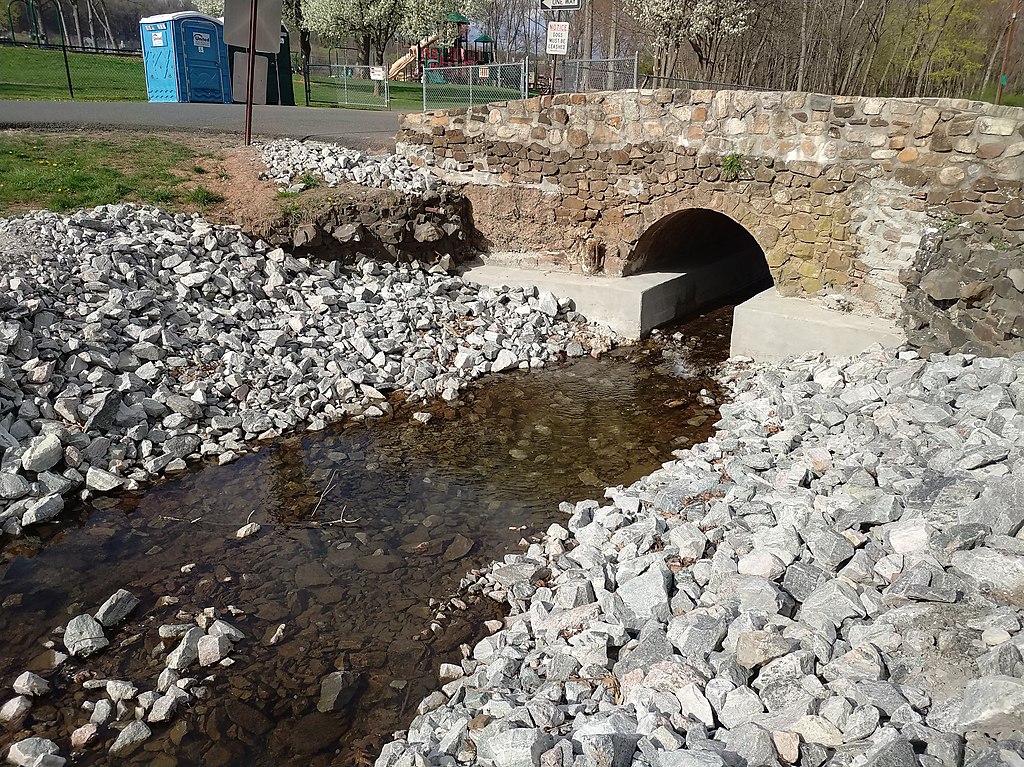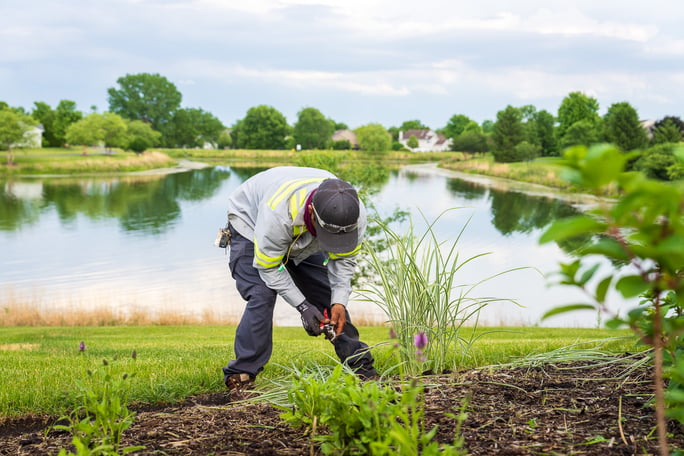Managing stormwater presents a significant challenge for Greater Chicago's commercial properties each year.
This involves handling stormwater drainage and regularly maintaining detention ponds. Proper detention pond maintenance is crucial to prevent safety hazards, such as flooded parking areas, wet walkways, and soggy turf, and more severe issues like erosion.
For industrial properties in Greater Chicago with extensive hard surfaces, stormwater cannot infiltrate the concrete and must instead flow to lower areas.
Installing a detention pond is essential to avoid flooding. Implement these maintenance tips for detention ponds to ensure water flows effectively on your commercial property:
4 Best Strategies for Detention Pond Maintenance in Greater Chicago
When detention ponds are neglected, they can back up and become clogged, rendering them ineffective.
This can create pools of water and even allow water to enter your building, causing damage.
That’s why you want to avoid any red flags and follow these detention pond maintenance tips to ensure your pond is always ready for Mother Nature’s worst storms.
1. Clear Blockages
After repairing detention pond erosion, you should also focus on restoring the surrounding vegetation. The damp environment around detention ponds creates ideal conditions for invasive plants.
Grasses and weeds tend to grow quickly, potentially blocking inlets and outlets that need to stay clear for proper water flow into the basins. Additionally, vegetation can trap debris, which often accumulates near these inflow and outflow areas.
Embrace regular weed and tall grass trimming, and remove trash and debris as part of your detention pond maintenance.
2. Stop Critter Damage
Animals like groundhogs can burrow underground, disrupting detention pond inlets and outlets along embankments.
Their burrowing and dam-building activities can damage parts of the pond, leading to erosion and sediment runoff. Holes created by these animals can also weaken the embankments' stability.
During detention pond maintenance, it’s important to repair any animal damage by filling holes with rock, topping them with soil, and reseeding the area.
3. Prevent Erosion With Shoreline Stabilization
A detention pond embankment may naturally erode over time due to the constant flow of water over it. These ponds, after all, are designed to catch water that flows into them from the surface.
Waterflow will take a toll on the ground over time. This can result in erosion, when soil and sediment wash into the pond and compromise its integrity. 
Using riprap as part of detention pond maintenance helps prevent erosion and prolongs the pond’s lifespan. Riprap involves placing a durable layer of stones or boulders to secure the pond edges against soil erosion.
Maintaining native vegetation along the shoreline is crucial, and adding a buffer strip above the shoreline can further enhance stabilization and reduce erosion.
4. Enlist a Professional For Detention Pond Maintenance
Detention ponds need regular maintenance if you intend to keep your pond operating as expected and avoid costly issues down the road.
That’s why hiring a professional with detention pond maintenance experience is important. They will know which areas to watch for and what maintenance is necessary to prevent erosion, clogs, flooding, and other potentially expensive problems.
A professional will address sediment buildup, remove trash, trim turf and vegetation, and keep your detention pond operating smoothly.
KD Landscape Can Be Your Partner in Detention Pond Maintenance in Greater Chicago
A detention pond requires maintenance, such as mowing, trash and litter clean up, simple landscaping, sediment removal, and slope stabilization. These tasks can be ignored if there is no plan in place for regular care. And bringing a pond back up to standards can be a large, unexpected expense.
But the job can seem overwhelming. We completely understand.
KD Landscape would love to take this burden off your plate. We have 18 years of experience managing detention ponds in Greater Chicago and know how to maintain them so they run well, so you don’t have to worry about them.
If you have questions about detention pond maintenance, we’d love to help. After all, detention pond maintenance isn’t complicated; it just must be done regularly and correctly. The ultimate benefit of this maintenance is a low-cost and attractive stormwater management feature that works for you and the local community.
Want to learn more about how KD Landscape can help you manage your detention pond on your Greater Chicago commercial property? Get started today with a free quote. We’ll review your options together so you can feel confident and make a great choice.
Image Source: Riprap






